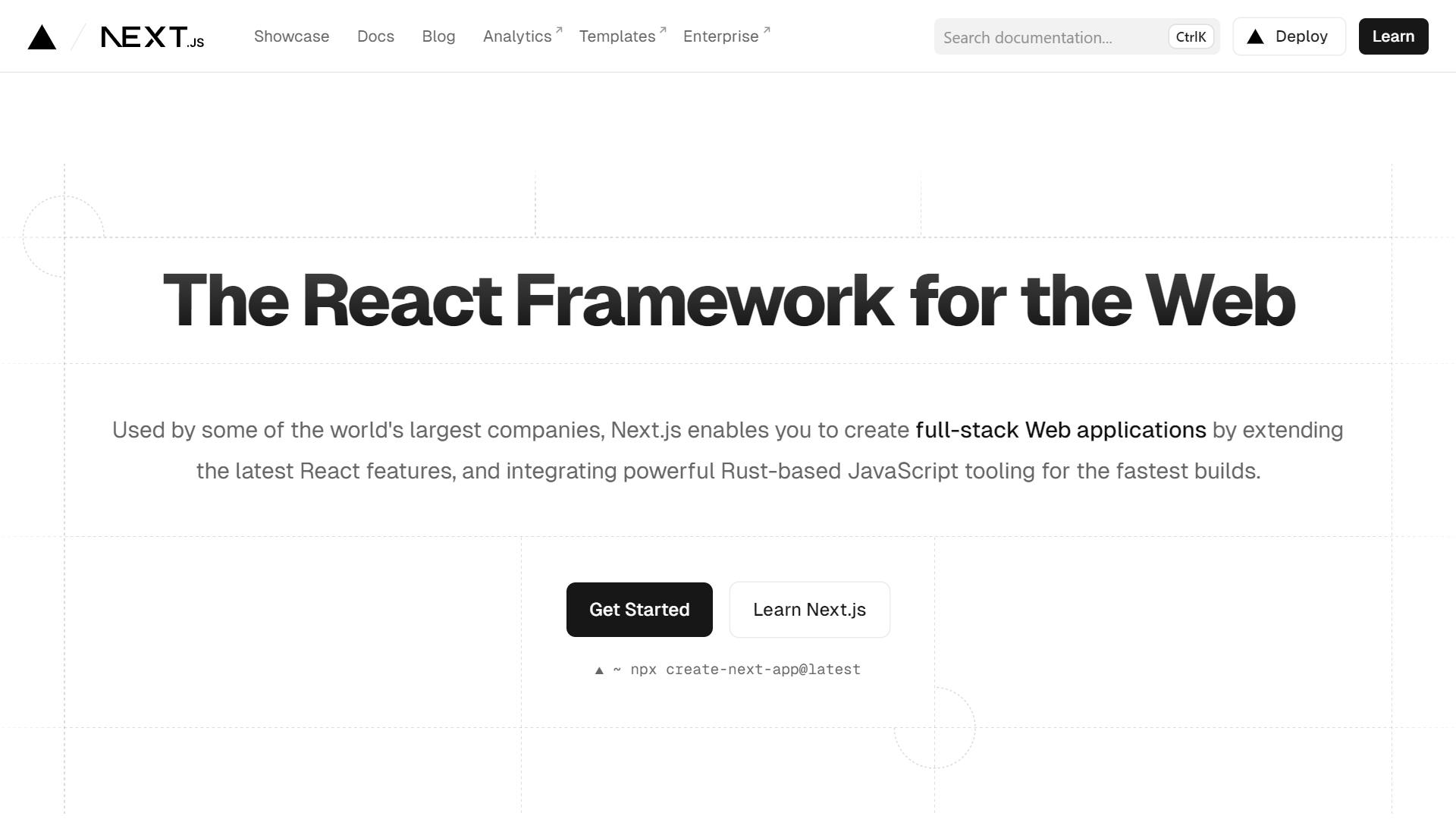Modernising Your React Journey: Crafting Apps in 2024
Ditch outdated setups and explore the new tools and frameworks shaping the React Landscape.
Table of contents
- Farewell, Create React App: Embracing the 2024 React Landscape
- Ditch the Deadweight, Embrace the Bolt: Why Vite is Your New React BFF
- Next.js: The Superhero of Server-Side Rendering in React
- Remix: Streamlining Full-Stack React with Speed and Simplicity
- Astro: Blazing Performance and Hybrid Flexibility for Your Next React Project
- Choosing Your React Framework Weapon in 2024: A Guide for Developers of All Levels
The year is 2024, and the React ecosystem is exploding! From sleek tools to robust frameworks, options abound, leaving developers baffled - which path to choose? Fear not, intrepid coders! This blog dissects the top contenders in React app creation, guiding you towards the perfect match for your project’s specific needs. Don’t waste time wandering down dead-end alleys; a handy flowchart at the end equips you with the ultimate decision-making weapon. Ready to level up your React game? Let’s dive in!
Farewell, Create React App: Embracing the 2024 React Landscape
Ah, Create React App, the familiar friend that once dominated the scene. In 2023, however, the torch was passed, as its reign as the default React project setup came to an end. While its simplicity and ease of use will be missed numerous modern alternatives have emerged, offering greater flexibility and power.
In this tech-forward climate, sticking with the now-deprecated Create React App wouldn’t do your project justice. So, let’s say “hasta la vista” to the past and dive into the exciting array of contemporary options available! No need to get lost in the maze - future-proof your development workflow with the latest and greatest tools tailored to your specific needs.
TL;DR: Create React App is a relic of the past. Embrace the cutting-edge tools shaping the 2024 React landscape and unleash your app’s full potential!
Ditch the Deadweight, Embrace the Bolt: Why Vite is Your New React BFF

Forget the sluggish days of Create React App - Vite has arrived to supercharge your development workflow. This lightning-fast tool is perfect for building client-rendered React projects that live solely in the browser.
Here’s why Vite is your new go-to:
Blazing Speed: Say goodbye to agonisingly slow builds and development cycles. Vite’s innovative approach makes it the speed demon of the React words, especially during development.
Minimal Fuss, Maximum Freedom: Vite takes an “opinionated” approach, giving you the flexibility to choose your own preferred libraries for routing, data fetching, and other essentials. No more being locked into a single ecosystem.
Simple Setup: Ditch the complex configurations and boilerplate. Getting started with Vite is a breeze - just one command and you’re off to the races:
npm create vite@latest my-react-app -- --template reactPerfect Fit for Serverless and APIs: If your app doesn’t need a server or relies solely on external APIs, Vite is your ideal partner. It thrives in these serverless environments.
Of course, there are a few things to keep in mind:
DIY Essentials: Since Vite doesn’t dictate libraries, you’ll need to pick and install your own tools for basic functionalities. But hey, that's part of the freedom!
Config Tweaks: While setup is simple, customising things like environment variables and image options might require a quick peek at the Vite docs.
Overall, Vite is a game-changer for React development. Its lightning speed, flexibility, and ease of use make it the perfect choice for modern, serverless, and API-driven projects. So, ditch the baggage and embrace the future - Vite is your new React BFF.
Next.js: The Superhero of Server-Side Rendering in React

In the quest for dynamic and performant React apps, Next.js emerges as the undisputed champion of server-side rendering (SSR). This powerful framework offers a unique blend of features that take your React development to the next level, including:
Server Components: A Game-Changer for Data Fetching
No more loading spinners! Server components allow you to fetch data on the server before rendering, ensuring a seamless user experience without jarring delays.
Code Example:
async function getData() { const res = await fetch('https://api.example.com/...'); return res.json(); } export default async function Page() { const data = await getData(); return <main>{data}</main>; }Reduced client-side JavaScript: Server components ship less code to the browser, leading to faster load times and a more responsive experience.
Beyond SSR: A Feature-Packed Arsenal
Next.js goes beyond SSR to provide a comprehensive toolkit for building robust React apps:
File-Based routing: Enjoy a structured and intuitive approach to defining routes.
Image optimization: Deliver lighting-fast image loading with built-in optimization techniques.
Font optimization: Ensure smooth font rendering for a polished user experience.
Server actions: Execute server-side logic directly from React components using the
use serverdirective.Route handlers: Create API endpoints within your Next.js app for seamless server-side data interactions.
Mastering the Learning Curve:
While Next.js offers immense power, it does come with a steeper learning curve compared to client-rendered React setups. Key concepts to grasp include:
Server components vs. React Hooks: Server components operate differently, requiring alternative state management strategies like storing state in the URL.
Next.js-specific patterns: Embrace the framework’s unique approaches to fully unlock its potential.
The Verdict:
Despite the learning curve, Next.js stands as the most popular React framework for a reason. It's trusted by startups and Fortune 500 companies alike to create exceptional web experiences. If you’re ready to push the boundaries of what’s possible with React, Next.js is your definitive ally.
Remix: Streamlining Full-Stack React with Speed and Simplicity

Next.js reigns as the SSR king, but Remix emerges as a contender with a distinct focus: web standards and blazing-fast delivery. This React-based framework lets you code on both server and client, but with a unique twist.
Remix vs. Next.js: Different Strokes for Different Folks
Remix leans on actions: Forget server components and complex server actions. Remix empowers you with simple “action” functions to handle server-side data mutations beyond GET requests.
Loaders take centre stage: Need your data? Enter “loader,” lightweight functions that retrieve data for your components. Familiar with React Router? Loaders and routes play nicely together, making Remix feel intuitive for seasoned travellers.
Code Example:
export async function loader() {
return json(await fakeGetTodos());
}
export default function Todos() {
const data = useLoaderData<typeof loader>();
return (
<div>
<TodoList todos={data} />
<Form method="post">
<input type="text" name="title" />
<button type="submit">Create Todo</button>
</Form>
</div>
);
}
Remixed Benefits:
Speed demon: Remix claims the crown for serving both static and dynamic content faster than Next.js, making it a master of full-stack apps and static sites.
Gentle learning curve: Compared to Next.js, Remix offers a smoother ascent, allowing you to build impressive applications without getting tangled in complexity.
The Trade-Off: A Smaller Village
Remix’s strengths come with a caveat: it’s not as popular as Next.js. This means a smaller community and fewer libraries at your disposal.
The Verdict:
For a powerful, standards-focused framework with a smooth learning curve, Remix shines. If you need server-side rendering and lightning-fast performance, Remix is a fantastic choice for your next React project. Just remember, the party might be a bit smaller than Next.js’s, but the conversation will be about innovation and speed.
Astro: Blazing Performance and Hybrid Flexibility for Your Next React Project

Say goodbye to bloated frameworks and embrace the future of web development with Astro - the rising star delivering the fastest React apps possible. But Astro isn’t just hot air; its secret weapon is “island architecture”, loading JavaScript only when needed for an ultra-smooth user experience.
Code Snippet: Installing Astro and React
npm install -g @astrojs/cli
npm create-astro app my-astro-app --template react
Unleash the Performance Beast:
Lightning-Fast Delivery: Astro’s island architecture lets your site prioritise critical content, minimising initial load times and keeping users engaged.
SEO Champion: Server-side rendering and static-site generation ensure optimal search engine visibility.
Beyond Static Sites:
Hybrid Power: While ideal for static content, Astro empowers you to add dynamic elements if needed with server-side code execution.
Framework Agnostic: No framework lock-in! Use React seamlessly alongside Vue, Svelte, or any other framework.
Content-Centric Hero:
Markdown Mastery: Craft beautiful content experiences with native support for markdown and MDX.
Collections Control: Define your data within markdown files using “collections” to ensure seamless integration with your React components.
The Astro Advantage:
Gaining Rapid Traction: Join the growing Astro community and tap into its exciting potential.
Perfect Choice for:
Static websites without databases or authentication.
Websites with predominantly static content.
Astro might not be your go-to for fully dynamic full-stack apps, but for blazing performance, SEO prowess, and hybrid flexibility, it’s the future knocking on your door. Give it a spin and experience the web, redefined.
Choosing Your React Framework Weapon in 2024: A Guide for Developers of All Levels
Confused about the React framework jungle? Fear not, weary developers! This guide cuts through the hype and helps you choose the perfect tool for your next project.
For React Rookies:
- Vite: Your friendly neighbourhood starter framework. Ideal for learning the ropes and building small to medium-sized projects without the complexity overload.
Full-Stack Fanatics:
- Next.js: The feature-packed powerhouse. Server components, file-based routing, image optimization - this framework has it all, but be prepared to invest time in mastering its intricacies.
Next.js Graduates:
- Remix: The streamlined alternative. If Next.js’s learning curve had you frowning, Remix offers a simpler path to building full-stack React apps, albeit with a smaller community and library ecosystem.
Static Site Saviours:
- Astro: The speed demon for content kings. Static websites and markdown-driven projects rejoice! Astro delivers blazing performance and seamless integration, perfect for showcasing your content without the need for databases or complex authentication.
Remember, there’s no one-size-fits-all answer. Choose your framework based on:
Project complexity: Vite for small projects, Next.js or Remix for complex ones, Astro for static content.
Learning curve: Vite and Astro are beginner-friendly Next.js and Remix require more effort.
Community and library support: Next.js has the largest ecosystem, Astro is the fastest-growing
With this guide as your compass, navigate the React framework landscape with confidence and build projects that shine!
Bonus Tip: Don’t be afraid to experiment! Each framework has its strengths and weaknesses - try them out and discover which one fits your development style and project needs perfectly.

